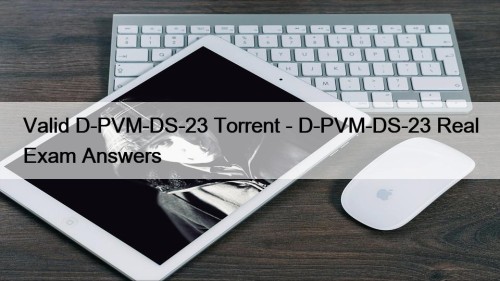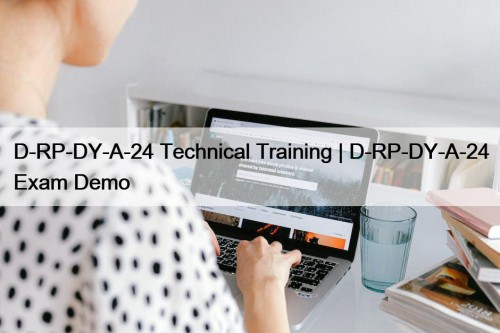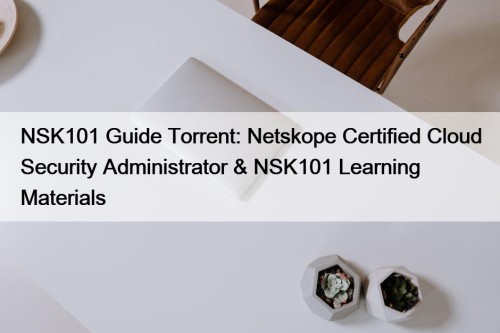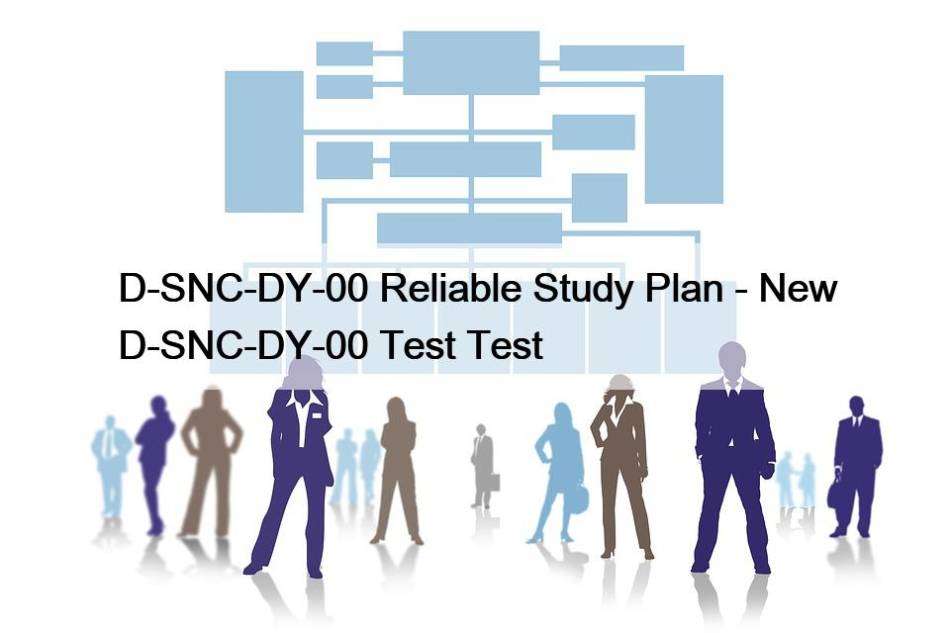Most Popular
 Valid D-PVM-DS-23 Torrent - D-PVM-DS-23 Real Exam Answers
Valid D-PVM-DS-23 Torrent - D-PVM-DS-23 Real Exam Answers
BONUS!!! Download part of PrepPDF D-PVM-DS-23 dumps for free: https://drive.google.com/open?id=17ZHyiWYBasnTJ3R2VvtWdY1jrvQvJCsLWe ...
 D-RP-DY-A-24 Technical Training | D-RP-DY-A-24 Exam Demo
D-RP-DY-A-24 Technical Training | D-RP-DY-A-24 Exam Demo
As a result, it gives you a feeling of taking ...
 NSK101 Guide Torrent: Netskope Certified Cloud Security Administrator & NSK101 Learning Materials
NSK101 Guide Torrent: Netskope Certified Cloud Security Administrator & NSK101 Learning Materials
Our company’s top NSK101 exam braindumps are meant to deliver ...



D-SNC-DY-00 Reliable Study Plan - New D-SNC-DY-00 Test Test

We strongly advise you to buy our windows software of the D-SNC-DY-00 study materials, which can simulate the real test environment. There is no doubt that you will never feel bored on learning our D-SNC-DY-00 practice materials because of the smooth operation. You will find that learning is becoming interesting and easy. During the operation of the D-SNC-DY-00 Study Materials on your computers, the running systems of the D-SNC-DY-00 study guide will be flexible, which saves you a lot of troubles and help you concentrate on study.
EMC D-SNC-DY-00 Exam Syllabus Topics:
| Topic | Details |
|---|---|
| Topic 1 |
|
| Topic 2 |
|
| Topic 3 |
|
| Topic 4 |
|
>> D-SNC-DY-00 Reliable Study Plan <<
D-SNC-DY-00 Questions of the Highest Quality - Unlock Your Success
PrepAwayETE is a leading platform in this area by offering the most accurate D-SNC-DY-00 exam questions to help our customers to pass the exam. And we are grimly determined and confident in helping you. With professional experts and brilliant teamwork, our D-SNC-DY-00 practice materials have helped exam candidates succeed since the beginning. To make our D-SNC-DY-00 simulating exam more precise, we do not mind splurge heavy money and effort to invite the most professional teams into our group.
EMC Dell SONiC Deploy Exam Sample Questions (Q19-Q24):
NEW QUESTION # 19
An administrator obtains the following CLI output:
How much time does the local system take to detect remote failures without receiving packets?
- A. 900milliseconds
- B. 600 milliseconds
- C. 800 milliseconds
- D. 1200 milliseconds
Answer: A
Explanation:
The local timers in the BFD (Bidirectional Forwarding Detection) configuration show a detect multiplier of 4 and a receive interval of 300ms. The time taken to detect remote failures is calculated as detect multiplier × receive interval = 4 × 300ms = 1200ms.
References:
* Dell Technologies SONiC documentation
* BFD Configuration Guide
NEW QUESTION # 20
Refer to the exhibits.

PC1 has a valid address on the 192.168.10.0 network, and PC2 has a valid address on the 192.168.20.0 network.
What happens when a ping command is issued between PC1 and PC2?
- A. The ping is successful because there are two routes from switch1 to switch2 which are connected to PC2.
- B. The ping is unsuccessful because there is no route to the VLAN 10 gateway address of 192.168.10.254.
- C. The ping is successful because there is a route to 10.0.1.1, which is connected to 1(10.2.2, which is connected to PC2.
- D. The ping is unsuccessful because there is no route from switch 1 to the 192.168.20.0 network.
Answer: D
Explanation:
* Network Topology Analysis:
* PC1 is on VLAN 10 with an IP address in the 192.168.10.0/24 subnet.
* PC2 is on VLAN 20 with an IP address in the 192.168.20.0/24 subnet.
* The network uses OSPF for routing between the switches.
* The OSPF area is 0, and all switches have loopback interfaces for OSPF.
* Routing Table Examination (from switch1):
* The show ip route command output from switch1 provides a detailed look at the routing table.
* Routes to the 192.168.10.0/24 network (directly connected via Vlan10) are present.
* No routes to the 192.168.20.0/24 network are listed in switch1's routing table.
* Explanation:
* For PC1 to communicate with PC2, switch1 must have a route to the 192.168.20.0/24 network.
* The absence of a route to the 192.168.20.0/24 network in switch1's routing table means that switch1 cannot forward packets destined for 192.168.20.0/24.
* Therefore, any ping from PC1 to PC2 will be unsuccessful as switch1 does not know how to route packets to PC2's network.
* Verification with Dell SONiC:
* In Dell SONiC environments, OSPF is configured to ensure dynamic routing.
* The configuration must include all necessary networks for inter-switch routing.
* If a network (like 192.168.20.0/24) is not included in OSPF configurations on switch1, routes to that network will not be advertised or learned, leading to failed connectivity tests like the ping from PC1 to PC2.
References:
* Dell Enterprise SONiC Deployment Guide
* Dell Technologies Networking - SONiC
NEW QUESTION # 21
In what order should these commands be entered to configure an access port in SONiC CLI if the required VLAN is already configured?
Answer:
Explanation:
Explanation:
To configure an access port on the SONiC CLI, the commands should be entered in the following order:
* Enter global configuration mode with configure terminal.
* Specify the interface to configure using interface ethernet 1/1.
* Set the interface to access mode and assign it to VLAN 20 with switchport access vlan 20.
* Exit the interface configuration mode with exit.
References:
* Dell Technologies SONiC Command Reference Guide
* Dell Networking Configuration Guide
NEW QUESTION # 22
Refer to the exhibit.
What can be determined from this show command?
- A. ECN is enabled for all colors
- B. ECN is enabled for all DSCP values
- C. There is a 10% probability that traffic is marked as congested
- D. Traffic below 100 KB is marked as congested
Answer: A
Explanation:
The output of the command show qos wred-policy pfc34 shows the ECN (Explicit Congestion Notification) configuration for the policy pfc34. The line ecn: ecn_all indicates that ECN is enabled for all traffic classes (all DSCP values). Additionally, the green-min-threshold, green-max-threshold, and green-drop-probability settings are shown, but there is no indication of a 10% probability for marking traffic as congested. Therefore, the correct answer is B.
References:
* Dell Enterprise SONiC documentation
* Dell Technologies InfoHub
NEW QUESTION # 23
How many times must BGP be configured when running symmetric IRB with two VFRs?
- A. 0
- B. 1
- C. 2
- D. 3
Answer: B
Explanation:
When running symmetric Integrated Routing and Bridging (IRB) with two Virtual Forwarding Routers (VFRs), BGP must be configured twice. Each VFR will have its own BGP instance to handle the routing information.
References:
* Dell Technologies SONiC Routing Guide
* Dell Networking Configuration Guide
NEW QUESTION # 24
......
In the era of information explosion, people are more longing for knowledge, which bring up people with ability by changing their thirst for knowledge into initiative and "want me to learn" into "I want to learn". As a result thousands of people put a premium on obtaining D-SNC-DY-00 certifications to prove their ability. With the difficulties and inconveniences existing for many groups of people like white-collar worker, getting a D-SNC-DY-00 Certification may be draining. Therefore, choosing a proper D-SNC-DY-00 study materials can pave the path for you which is also conductive to gain the certification efficiently.
New D-SNC-DY-00 Test Test: https://www.prepawayete.com/EMC/D-SNC-DY-00-practice-exam-dumps.html
- New D-SNC-DY-00 Reliable Study Plan Free PDF | High Pass-Rate New D-SNC-DY-00 Test Test: Dell SONiC Deploy Exam 🎃 Enter { www.pass4leader.com } and search for ▛ D-SNC-DY-00 ▟ to download for free 🦑Reliable D-SNC-DY-00 Test Forum
- 100% Pass Quiz 2025 D-SNC-DY-00: Fantastic Dell SONiC Deploy Exam Reliable Study Plan 🔯 Open ⏩ www.pdfvce.com ⏪ and search for 【 D-SNC-DY-00 】 to download exam materials for free 🏃D-SNC-DY-00 Book Pdf
- Pdf D-SNC-DY-00 Files 🥱 Latest D-SNC-DY-00 Dumps Questions 🥎 Reliable D-SNC-DY-00 Test Camp 🎌 Search for ➽ D-SNC-DY-00 🢪 and download it for free immediately on ☀ www.itcerttest.com ️☀️ 👉Real D-SNC-DY-00 Braindumps
- D-SNC-DY-00 Valid Examcollection 🚪 D-SNC-DY-00 Valid Examcollection 😦 Real D-SNC-DY-00 Braindumps 🎱 Easily obtain free download of ( D-SNC-DY-00 ) by searching on ▶ www.pdfvce.com ◀ 🍀D-SNC-DY-00 Prep Guide
- 2025 D-SNC-DY-00 Reliable Study Plan | Trustable 100% Free New Dell SONiC Deploy Exam Test Test 🌎 The page for free download of ( D-SNC-DY-00 ) on ☀ www.passcollection.com ️☀️ will open immediately 🦮Test D-SNC-DY-00 Result
- D-SNC-DY-00 Valid Examcollection 💔 D-SNC-DY-00 Valid Examcollection 🧭 Reliable D-SNC-DY-00 Test Camp 🦼 Immediately open ✔ www.pdfvce.com ️✔️ and search for ➡ D-SNC-DY-00 ️⬅️ to obtain a free download 🚝D-SNC-DY-00 Reliable Exam Labs
- Latest D-SNC-DY-00 Dumps Questions 🚁 D-SNC-DY-00 Unlimited Exam Practice 🤓 D-SNC-DY-00 Prep Guide 👰 Search for ▛ D-SNC-DY-00 ▟ and download it for free immediately on ⇛ www.pdfdumps.com ⇚ 🧦D-SNC-DY-00 Book Pdf
- 2025 D-SNC-DY-00 Reliable Study Plan 100% Pass | Reliable D-SNC-DY-00: Dell SONiC Deploy Exam 100% Pass 📨 Open website ⏩ www.pdfvce.com ⏪ and search for ➥ D-SNC-DY-00 🡄 for free download 🐵Reliable D-SNC-DY-00 Test Syllabus
- Authentic D-SNC-DY-00 Learning Guide carries you pass-guaranteed Exam Questions - www.torrentvalid.com 🚆 Download ➡ D-SNC-DY-00 ️⬅️ for free by simply entering ▛ www.torrentvalid.com ▟ website 🐫New D-SNC-DY-00 Test Book
- D-SNC-DY-00 Valid Exam Discount 🔤 D-SNC-DY-00 Book Pdf 🌸 D-SNC-DY-00 Exam Materials 🐣 Open website ➡ www.pdfvce.com ️⬅️ and search for ✔ D-SNC-DY-00 ️✔️ for free download 👍D-SNC-DY-00 Test Papers
- D-SNC-DY-00 Latest Training 🚺 Exam D-SNC-DY-00 Questions Fee 🥜 D-SNC-DY-00 Latest Test Simulator 🎫 Open ⏩ www.prep4sures.top ⏪ and search for ☀ D-SNC-DY-00 ️☀️ to download exam materials for free 🦮D-SNC-DY-00 Latest Training
- D-SNC-DY-00 Exam Questions
- zxtrader.in www.9kuan9.com sdeportiva.cl nextstepeduc.com skillmart.site channel.yogalaurent.com scholarchamp.site taelimgcc.com fahamni.akhdariyounes.com elearning.hing.zone
Tags: D-SNC-DY-00 Reliable Study Plan, New D-SNC-DY-00 Test Test, Test D-SNC-DY-00 Duration, Advanced D-SNC-DY-00 Testing Engine, D-SNC-DY-00 Authentic Exam Questions